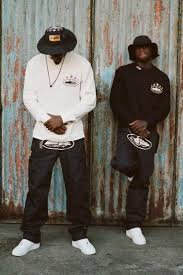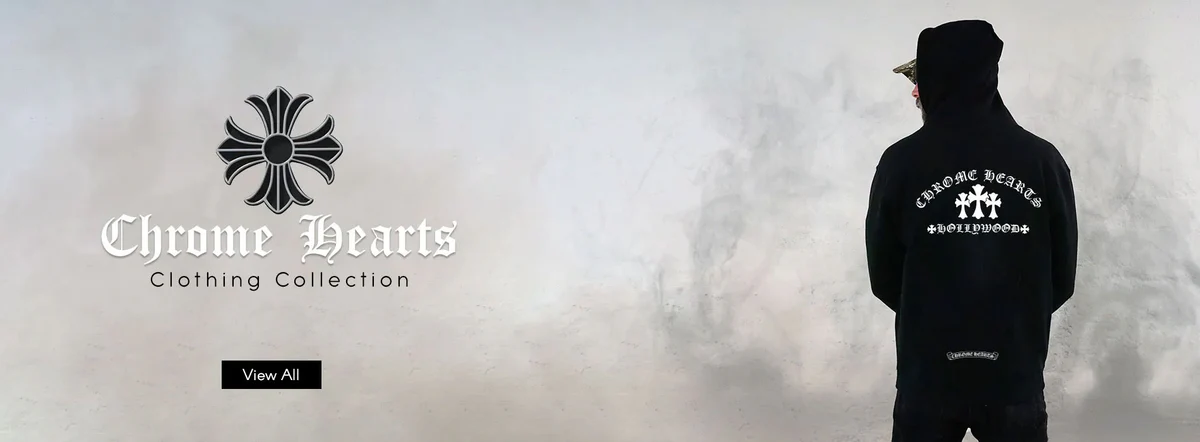Chrome Hearts’ Rise in the USA: From Niche Luxury to Streetwear Royalty
In a fashion world where trends rise and fall with the speed of an Instagram scroll, few brands manage to carve out a space that feels both timeless and disruptive. Chrome Hearts, an American luxury brand rooted in rebellious energy and rock 'n' roll edge, has defied the odds. What began as a niche label catering to motorcycle culture has evolved into a multi-million-dollar global fashion empire—and its rise in the United States has been nothing short of extraordinary.
The Origins: Handcrafted Rebellion
Chrome Hearts was founded in 1988 by Richard Stark, a Los Angeles-based motorcycle enthusiast and craftsman. Alongside Leonard Kamhout and John Bowman, Stark set out to create leather apparel and silver accessories that matched the rough, raw lifestyle of custom bike riders. The name “Chrome Hearts”—an unlikely pairing of toughness and sentiment—symbolized the blend of edge and elegance the brand would come to embody.
What set Chrome Hearts apart from day one was its handcrafted quality. Every piece—whether jewelry, leather, or eyewear—was meticulously made in-house using the finest materials: .925 sterling silver, exotic leathers, rare woods, and gold. This craftsmanship, combined with gothic fonts, cross motifs, dagger symbols, and religious iconography, gave Chrome Hearts a unique identity: luxurious, yet deeply rebellious.
Slow Growth, Strong Roots
Unlike many brands that rely on aggressive marketing, Chrome Hearts grew organically. Stark famously refused traditional retail strategies, mass production, and advertising. The brand sold exclusively through invite-only boutiques, private clients, and handpicked retailers. This approach built a sense of mystique and exclusivity that set it apart from the mainstream fashion industry.
By the early 2000s, Chrome Hearts Hoodie had developed a cult following among rock stars, Hollywood insiders, and creative elites. Celebrities like Lenny Kravitz, Cher, and Steven Tyler wore Chrome Hearts not because it was trendy, but because it felt authentic. It wasn’t just fashion—it was a statement.
A Celebrity Catalyst: Hip-Hop and High Fashion Collide
While Chrome Hearts had already gained traction in rock and biker circles, its real surge in the U.S. mainstream came from a very different corner: hip-hop culture.
Artists like Kanye West, Lil Uzi Vert, Travis Scott, and Playboi Carti began sporting Chrome Hearts jewelry, hoodies, and sunglasses in music videos, concert appearances, and social media. Suddenly, the brand’s gothic silver rings and oversized cross patches were everywhere—from streetwear blogs to rap lyrics.
Kanye, in particular, played a pivotal role. Not only did he wear Chrome Hearts extensively, but he also worked closely with Laurie Lynn Stark (Richard’s wife and creative partner) and their son, Jesse Jo Stark, on custom Chrome Hearts pieces and collaborations. These relationships deepened the brand’s reach into the cultural fabric of American music and youth fashion.
Chrome Hearts became more than a rock brand. It became a luxury badge for the new generation—a symbol of wealth, taste, and cultural cachet.
Exclusivity and Scarcity: The Perfect Formula
One of Chrome Hearts’ most powerful strategies has been its commitment to controlled scarcity. Unlike designer brands that flood the market with seasonal drops, Chrome Hearts maintains tight distribution and limits its product availability. The brand does not sell online (aside from limited collaborations), and you won’t find it listed on major fashion e-commerce sites.
U.S. boutiques—located in cities like Los Angeles, New York, and Miami—are few, and they function more like high-end galleries than retail shops. Each store is uniquely designed, often filled with custom furniture, art installations, and private showrooms. This physical and psychological barrier to entry only intensifies consumer desire.
Even in resale markets like Grailed or StockX, Chrome Hearts items command sky-high prices. It’s not uncommon for a hoodie to resell for over $1,000 or for a rare silver ring to fetch several thousand. That chrome hearts Shirts kind of aftermarket demand has turned Chrome Hearts into streetwear royalty—a brand with the cachet of Louis Vuitton but the credibility of an underground label.
Collaborations and Cultural Relevance
Part of Chrome Hearts’ appeal in the U.S. is how selectively it collaborates. It doesn’t partner with just anyone—it aligns with those who share its values and aesthetics. Some of the brand’s most notable U.S. collaborations include:
-
Off-White x Chrome Hearts – A blend of gothic luxury and Virgil Abloh’s futuristic streetwear vision.
-
Drake’s Chrome Hearts Rolls-Royce – A fully customized car, showcasing just how deep the brand’s influence runs.
-
Bella Hadid x Chrome Hearts – The supermodel has been a long-time muse and collaborator, cementing the brand’s relevance among Gen Z.
These partnerships have helped Chrome Hearts transcend generational and stylistic boundaries. It’s no longer just a jewelry brand or biker label—it’s a cultural touchstone.
The Future of Chrome Hearts in the USA
As Chrome Hearts continues to rise in the American fashion scene, its future looks bright—but purposefully unhurried. The brand refuses to scale in ways that compromise its identity. There’s no rush for more stores, more drops, or social media saturation. That’s part of the appeal.
In an era dominated by fast fashion, quick content, and disposable trends, Chrome Hearts remains an outlier—luxurious, deliberate, mysterious, and fiercely loyal to its core values. For many in the U.S., it represents more than high-end fashion. It’s a symbol of authenticity, individuality, and rebellion against the mainstream.
Cortiezs Org Details
User Profile
- Full name
- Cortiezs Org
- Email address
- cortiezsorg@gmail.com
- Join Date
- 2025-07-29
- State
- London
- City
- London
- Pincode
- Address
- United Kingdom
- Follow us on Facebook
- Follow us on Twitter
- https://cortiezs.org/
- Website Name
- https://cortiezs.org/
- Bio
- Corteiz is the UK Streetwear Clothing Store. Buy Shirts, Hoodies, Sweatpants, Sweatshirt from the official Cortiez Clothing store with big discount.

